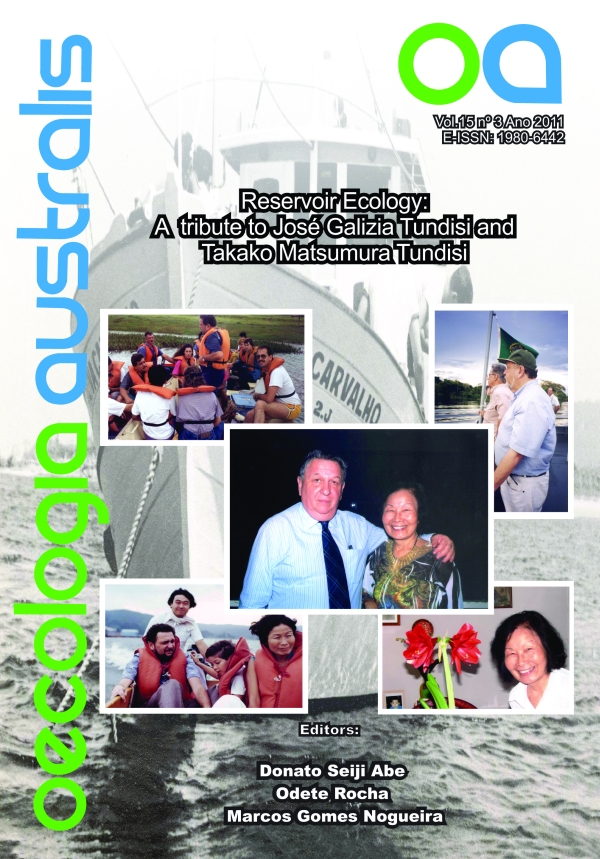IMPORTANCE OF LATERAL LAGOONS FOR THE ZOOPLANKTON ASSEMBLAGES (CLADOCERA AND COPEPODA) IN A LARGE TROPICAL RESERVOIR
Palavras-chave:
Paranapanema River, floodplain, microcrustaceans, spatial variation, temporal variation.Resumo
IMPORTÂNCIA DAS LAGOAS LATERAIS PARA AS ASSEMBLÉIAS ZOOPLANCTÔNICAS (CLADOCERA E COPEPODA) EM UM RESERVATÓRIO TROPICAL DE GRANDE PORTE. O objetivo deste estudo foi analisar a composição e os atributos ecológicos das assembléias zooplanctônicas (Cladocera e Copepoda) de quatro lagoas marginais e do canal principal do reservatório de Rosana (SE, Brasil). Os trabalhos de campo foram realizados em setembro e novembro de 2004 e janeiro, março, maio e agosto de 2005. O número total de táxons identificados foi de 72 (55 cladóceros e 17 copépodes). Sazonalmente, a maior riqueza foi observada durante o período chuvoso. As lagoas laterais, em relação ao reservatório, e o período chuvoso, em relação ao seco, apresentaram maiores abundâncias de organismos. Os copépodes foram mais numerosos que os cladóceros. As lagoas marginais e o período seco apresentaram maior abundância de naúplios. Calanoida foi dominante em relação aos Cyclopoida. Entre os cladóceros, Bosminidae foi a família mais numerosa, seguida por Daphniidae. Os resultados mostraram que as assembléias zooplanctônicas são influenciadas pelos fatores metereológicos, por alguns nutrientes (indiretamente) e pela abundância do fitoplâncton. Esse padrão indicou que no sistema de lagoas laterais, o funcionamento das comunidades é determinado por mecanismos de controle ascendente. Os resultados validaram a hipótese de que as lagoas laterais têm um proeminente papel ecológico para o zooplâncton do reservatório de Rosana e mostraram quais são as principais forças que influenciam na composição e atributos ecológicos das assembléias. A incorporação das lagoas laterais em programas regionais de conservação ambiental pode ser uma boa estratégia para conservação da biodiversidade aquática, mitigando o impacto negativo da construção da barragem.
Palavras-chave: Rio Paranapanema; lagoas marginais; microcrustáceos; variação espacial; variação temporal.


